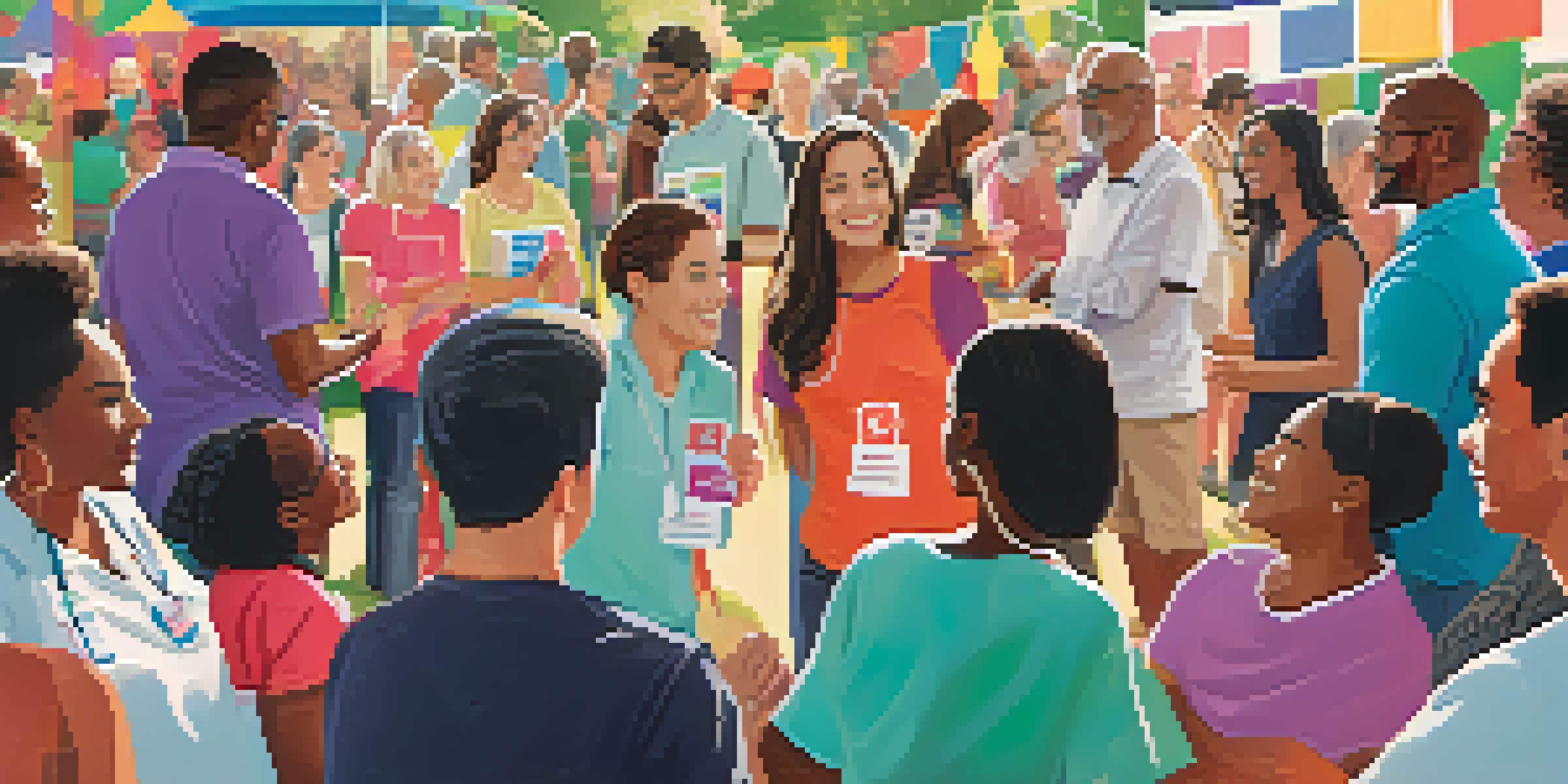Exploring Cultural Attitudes Towards Organ Donation

Understanding Organ Donation Across Cultures
Organ donation is a vital topic that resonates differently in various cultures. Some societies view it as a generous act of altruism, while others may see it through a lens of spiritual or ethical concerns. This variation often stems from deeply rooted beliefs and values that shape how individuals perceive life and death.
Organ donation is not a sign of weakness; it is a sign of strength and love for those who need it most.
For instance, in many Western countries, the concept of organ donation is largely accepted and promoted as a means of saving lives. On the other hand, cultures with strong spiritual beliefs may hesitate to embrace it, fearing it could disrupt the journey of the soul after death. Such differences highlight the importance of understanding cultural contexts when discussing organ donation.
These attitudes can significantly influence donor registration rates and the overall effectiveness of organ donation programs. Recognizing these cultural nuances is essential for healthcare professionals and policymakers, as it allows for more tailored and respectful approaches to increase awareness and participation in organ donation initiatives.
Religious Beliefs and Organ Donation
Religious beliefs play a crucial role in shaping attitudes toward organ donation. For many, the teachings of their faith influence their views on the sanctity of the body and the afterlife, making it a sensitive subject. For example, in Christianity, organ donation is often seen as an act of love and charity, while some interpretations of Islam may raise concerns about the integrity of the body after death.

Judaism typically supports organ donation, focusing on the value of saving lives, which aligns with the principle of 'pikuach nefesh.' However, interpretations can vary among different Jewish communities, leading to diverse opinions. Understanding these religious perspectives is vital for fostering dialogue and addressing concerns.
As communities become more diverse, it's important for healthcare providers to engage with religious leaders to create an open dialogue about organ donation. By doing so, they can help dispel myths and encourage more individuals to consider becoming donors, ultimately contributing to a greater understanding of this life-saving practice.
Societal Influences on Organ Donation Attitudes
Societal norms and values have a profound impact on how organ donation is perceived. In cultures where collectivism is valued, the idea of donating organs may be more readily accepted as a community responsibility. Conversely, in more individualistic societies, personal autonomy may lead to a reluctance to donate, stemming from fears about medical ethics and the treatment of donors.
The greatness of a nation and its moral progress can be judged by the way its animals are treated.
Public campaigns and education play a significant role in shaping these societal attitudes. For instance, countries with successful organ donation programs often employ targeted outreach strategies that resonate with local values, making the act of donation feel more communal and less daunting.
Moreover, societal attitudes can shift over time due to changing demographics, increased awareness, and advocacy efforts. Understanding these dynamics can help stakeholders create effective strategies to promote organ donation and improve healthcare outcomes across different cultural contexts.
The Role of Education in Shaping Attitudes
Education is a powerful tool for influencing attitudes toward organ donation. By providing accurate information about the process and benefits, educational programs can demystify organ donation and address common misconceptions. For instance, many people may not realize that organ donation does not interfere with the medical care they receive at the end of life.
Schools and community organizations can play a critical role in this educational effort, fostering discussions about organ donation from an early age. As young people become informed about the importance of donation, they may be more likely to consider it as adults and encourage their families to do the same.
Furthermore, integrating organ donation topics into health education curricula can create a more informed populace, ultimately leading to increased donor registration rates. By emphasizing the lifesaving potential of organ donation, education can help bridge the gap between cultural beliefs and the realities of saving lives through donation.
Addressing Myths and Misconceptions
Myths and misconceptions about organ donation can significantly hinder individuals' willingness to participate. Common beliefs, such as the idea that doctors won't try as hard to save a patient if they are a registered donor, can create fear and distrust. Addressing these myths is essential for promoting a positive attitude toward organ donation.
Healthcare providers and advocates must actively engage in dispelling these myths through transparent communication and community outreach. Sharing real stories of organ donors and recipients can humanize the process and highlight the profound impact that donation can have on individuals and families.
By fostering open discussions and providing factual information, communities can begin to shift perceptions and encourage more individuals to consider becoming organ donors. The goal is to create an environment where organ donation is seen as a noble and life-affirming choice, rather than a source of fear or misunderstanding.
Impact of Media on Organ Donation Awareness
Media plays a significant role in shaping public perceptions of organ donation. Through news stories, documentaries, and social media campaigns, the narrative surrounding organ donation can be positively influenced. For instance, a heartfelt story about a recipient's second chance at life can inspire others to register as donors.
However, the media can also perpetuate negative stereotypes or myths about organ donation, which can contribute to fear and hesitation. It’s crucial for media outlets to approach this topic responsibly, ensuring that the information shared is accurate and respectful of cultural sensitivities.
Engaging influencers and public figures in organ donation campaigns can also amplify awareness and encourage conversations. By leveraging the power of media in a thoughtful way, it’s possible to enhance understanding and acceptance of organ donation across diverse cultural landscapes.
Encouraging Cross-Cultural Dialogue on Organ Donation
Fostering cross-cultural dialogue is essential for enhancing understanding and acceptance of organ donation worldwide. By creating platforms for open discussions, individuals from diverse backgrounds can share their beliefs and experiences, promoting a greater appreciation of different perspectives. This exchange can help bridge gaps in understanding and reduce stigma associated with organ donation.
Community events, workshops, and interfaith dialogues can serve as effective venues for these discussions. They provide opportunities for people to ask questions, share concerns, and learn from one another in a respectful environment. By facilitating these conversations, we can create a more inclusive narrative around organ donation that resonates across cultural boundaries.

Ultimately, encouraging dialogue not only enhances awareness but also cultivates a sense of community and shared responsibility. As we learn from each other, we can work together to promote organ donation as a life-saving option that transcends cultural differences, fostering a spirit of compassion and generosity.